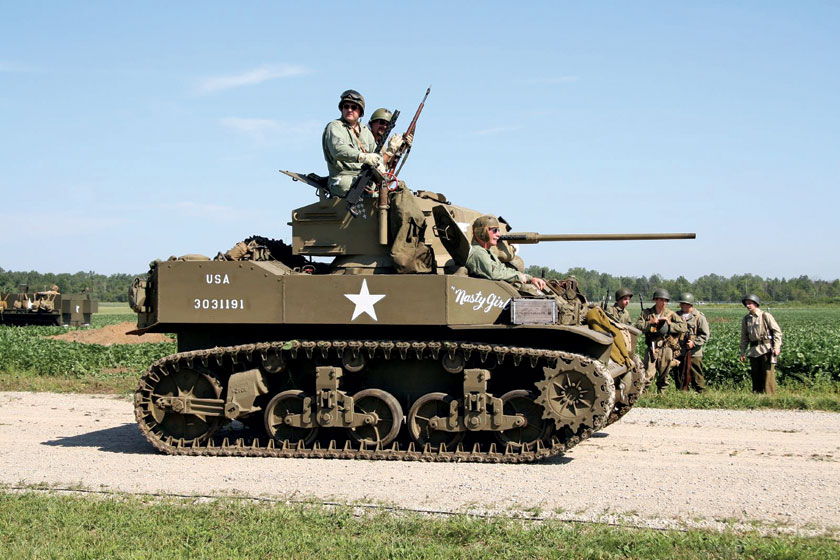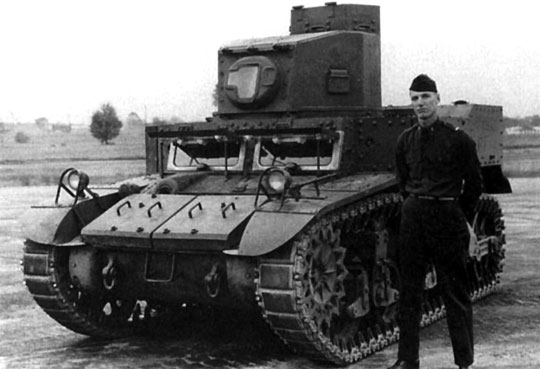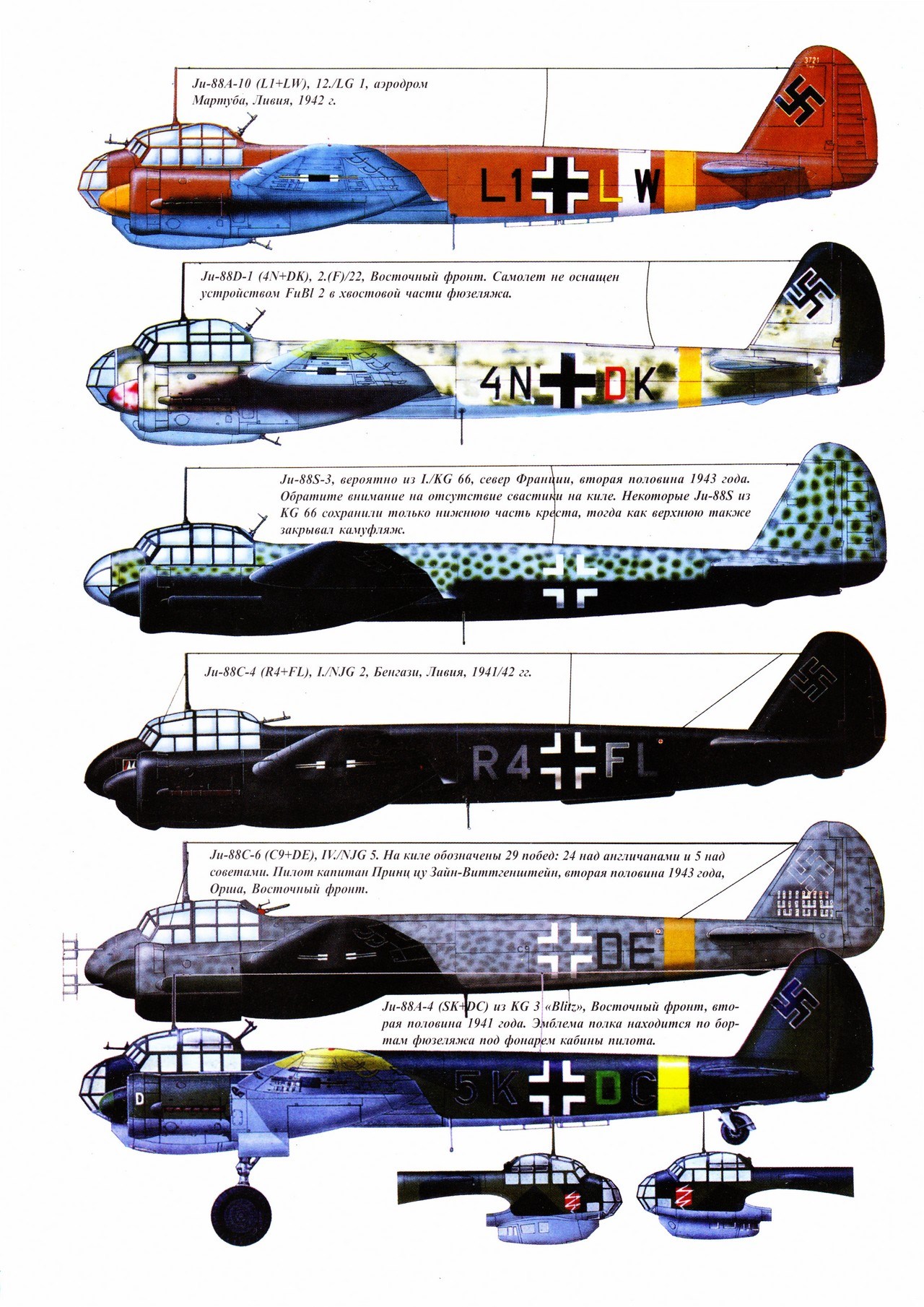
Light tank M5 Stuart part 2

The most popular US Army light tank during World War II was the M5A1 Stuart. In European TDWs, they were lost mainly to artillery fire (45%) and mines (25%) and to fire from hand-held anti-tank grenade launchers. Only 15% were destroyed by tanks.
In the autumn of 1942, it was already clear that light tanks armed with 37-mm guns and with limited armor were not suitable for tank operations that were essential on the battlefield - supporting infantry when breaking through defenses or maneuvering as part of an enemy grouping, because . as well as to support their own defensive activities or counterattacks. But these are all the tasks for which tanks were used? Absolutely not.
A very important task of the tanks was to support the infantry in protecting the lines of communication in the rear of the advancing troops. Imagine that you are in command of a brigade combat team led by an armored battalion with three companies of Shermans, accompanied by infantry in Half-Track armored personnel carriers. An artillery squadron with M7 Priest self-propelled guns is advancing in the rear. In jumps, since there are one or two batteries on both sides of the road, ready to open fire on calling troops from the front, and the rest of the squadron approaches the armored unit to take up a firing position, the last battery in the rear goes into the marching position and moves forward. Behind you is a road with one or two important intersections.

The original M3E2 prototype, with an M3 tank hull powered by two Cadillac automotive engines. This freed up production capacity for Continental radial engines, which are much needed in training aircraft.
On each of them, you left a company of motorized infantry so that it would not let the enemy cut it, because fuel tanks and General Motors trucks "with everything you need" go along this route. And the rest of the way? This is where patrolling light tank platoons sent from intersection to intersection is the ideal solution. If so, they will locate and destroy an enemy battle group that has crossed fields or woods on foot to ambush supply transports. Do you need medium Shermans for this? By no means will the M5 Stuart fit. More serious enemy forces can appear only along the roads. True, tanks can move through the fields, but not for a greater distance, because if they stumble upon a water barrier or a dense forest, they will have to go around it somehow ... And the road is a road, you can drive along it relatively quickly.
But this is not the only task. He leads a battalion of medium tanks with infantry. And here is the road to the side. It would be necessary to check what was there, at least 5-10 km from the main direction of attack. Let the Shermans and Half-Trucks move on, and a platoon of Stewart's satellites be sent aside. When it turns out that they have traveled ten kilometers, and there is nothing interesting there, let them return and join the main forces. And so on…
There will be many such assignments. For example, we stop for the night, a brigade command post is deployed somewhere behind the troops, and to protect it, we need to add a company of light tanks from the armored battalion of the brigade combat group. Because medium tanks are needed to strengthen temporary defense at the reached turn. And so on and so forth… There are many reconnaissance missions, covering the wing, patrolling supply routes, guarding teams and headquarters, for which “big” tanks are not needed, but some kind of armored vehicle would be useful.
Every movement that would reduce the need for fuel and heavy shells (ammunition for the M5 Stuart was much lighter, and therefore in weight - it was easier to take to the front line) was good. An interesting trend was emerging in all countries that created armored forces during the Second World War. At first, everyone formed divisions full of tanks, and then everyone limited their number. The Germans reduced the number of units in their panzer divisions from a two-regiment brigade to one regiment with two battalions. The British also left them with one armored brigade instead of two, and the Russians disbanded their large armored corps from the beginning of the war and instead formed brigades, which then began to be carefully assembled into corps, but much smaller, no longer with more than a thousand tanks, but with the number at least three times smaller.
The Americans did the same. Initially, their panzer divisions, with two panzer regiments, six battalions in all, were sent to the front in North Africa. Then, in each subsequent tank division and in most of the previously formed, only three separate tank battalions remained, the regimental level was eliminated. Until the end of the war, armored battalions with a four-company organization of the combat unit (not counting the command company with support units) remained in the composition of the American armored division. Three of these battalions had medium tanks, while the fourth was left with light tanks. In this way, the necessary amount of supplies that had to be delivered to such a battalion was somewhat reduced, and at the same time all possible tasks were provided with combat means.
After the war, the category of light tanks later disappeared. Why? Because their tasks were taken over by more versatile vehicles developed at the height of the Cold War - BMPs. Not only were their firepower and armor protection comparable to light tanks, they also carried an infantry squad. It was they who, in addition to their main purpose - transporting infantry and providing support for it on the battlefield - also took over the tasks that were previously performed by light tanks. But during World War II, light tanks were still used in almost all the armies of the world, because the British had American Stuarts from Lend-Lease supplies, and the T-70 vehicles were used in the USSR until the end of the war. After the war, the M41 Walker Bulldog family of light tanks was created in the USA, the PT-76 family in the USSR, and in the USSR, that is, a light tank, a reconnaissance armored personnel carrier, a tank destroyer, an ambulance, a command vehicle and a technical assistance vehicle, and that’s it. family on one chassis.
